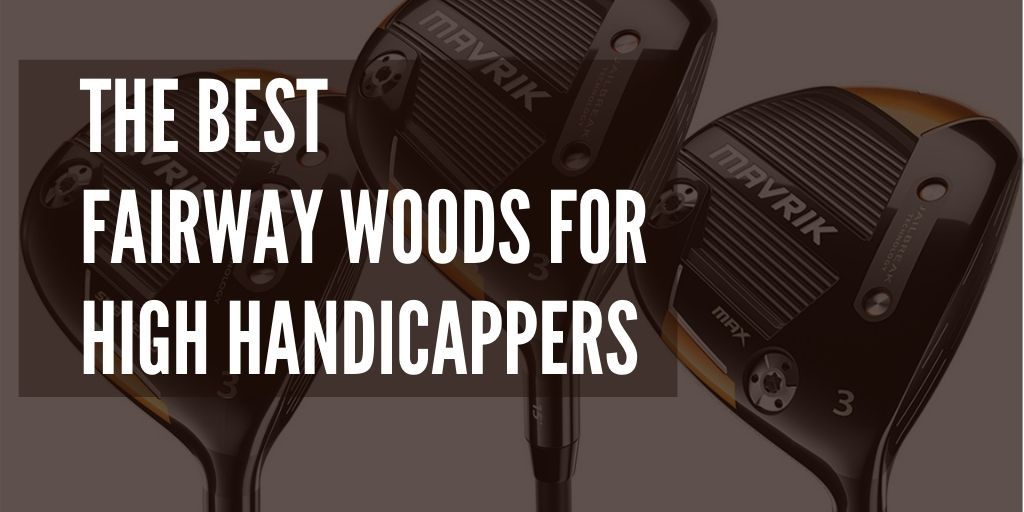
So you're poking around the internet asking, “what are the best fairway woods for high handicappers?” Would you like some advice from an expert who custom fits golfers like yourself every day? Then read on...
Few questions in golf club fitting are answered with a concrete yes or no. It’s actually one of the things I like most about fitting golf clubs - the uniqueness that every player's swing and every problem presents. Each client I fit brings a distinct set of strengths and weaknesses to the fitting bay, which forms a puzzle that, as a fitter, I get to help them solve.
Who am I? I’m Greg Gibson, a Master club fitter and Trackman specialist at Golf Headquarters in Louisville, Kentucky. Our team of fitters and builders makes up one of the largest independently owned and operated golf retail stores in the United States.
Why Should You Listen to me? I want to clarify that the most efficient way to find the best clubs for your game is to go through a proper fitting yourself. That being said, finding great fitters isn’t always easy or affordable. So Practical Golf and I have teamed up to share some of my findings, which I’ve compiled by observing nearly 500,000 golf shots hit on Trackman over the past three years.
I’m going to divide the “higher handicapper” into a couple of common categories. Also, I'll let you know what fairway woods I believe are the most suitable for this style of player.
Player Profile
Usually, I find high handicappers have the following tendencies:
- Slower swing speed (7 iron less than 150 yards)
- A shallow angle of attack (not a big divot taker, often just brushing the grass on full shots)
These players need two primary things from a design standpoint to make a fairway metal easier to hit:
- A thin top-to-bottom profile
- A low and deep center of gravity to help launch the ball up in the air
Shallow deliveries paired with a long shaft make crisp contact a little harder to come by. Heads that have a flatter sole will make it easier to catch shots off the fairway crisply.
Players who don’t create a lot of speed or spin will need some help getting the ball up in the air. FW heads with a squashed down look will often provide this higher launching CG (center of gravity) placement.
Fairway Wood Recommendations
The Manufacturers I’d consider looking at first:
#1 Pick: Ping G400, G410, and G425

For the last several years, Ping’s fairway metal offerings have been among the easiest for “sweeper” swing styles to play off of the ground. They sit incredibly flat and provide a low and deep center of gravity, allowing for high launch. From what I’ve seen, the 425 fairway heads will continue this trend in 2021.
#2: Titleist TS2 and TSi2

Titleist fairway metals are known for their clean and traditional looks. The “2” instead of the “3” models sit a little tighter to the ground and boast an interchangeable weight in the back, allowing for more weight to be added to pull the CG deeper. The Titleist TS2 and TSi2 are amongst the best fairway woods for high handicappers.
#3: Callaway Mavrik Max and Epic Max

The Release of the 2021 Epic line marks the 3rd generation of metal clubfaces designed with Artificial Intelligence. I watch Trackman numbers for a living; these things are HOT.
There’s no doubt that high handicap players will need a club they can hit a long way off the ground. Whether it’s trying to reach a long par 4 or trying to recover from a poor tee shot, distance off the deck is important. Callaway fairway woods deliver remarkable ball speed both on center and off-center hits. Put them on the shortlist to demo for sure.
Additional Things to Consider
Before you buy a fairway wood sight unseen, there are a few things I also want you to consider.
Why Loft is So Important
Loft is extremely important. I FREQUENTLY fit slower speed players into 4-wood and 7-wood instead of 3-woods and 5 woods. Even when you’re building a “chase club” (club meant to have a penetrating flight and land with lots of potential for roll), you need the ball to be in the air and spinning enough to stay flying. Roll is great, but there is a lot less friction during flight than on the ground.
Long story short, many high handicappers I fit often need more loft on their fairway metals than they think.
Looks Matter
Look matters a LOT in this golf club. Hitting a fairway metal off the ground is one of the hardest stock shots in golf.
Finding a fairway metal that looks good to you can help inspire some much-needed confidence. It’s no wonder that fairway metals are often the oldest clubs in tour player's bags. When you get one you trust, it’s often worth holding on to!
Adjustability Helps
Adjustable tips are a great asset to fitting fairway metals. The ability to go upright, flat, and add or subtract a little bit of loft can really help dial in distance and forgiveness.
Wrapping It Up: The Best Fairway Woods for High Handicappers
Hopefully, I've educated you about the needs of higher-handicap golfers when it comes to fairway woods. As always, I encourage golfers to get custom fit if possible. An internet article can't tell you the perfect club for your swing. However, if you don't have access to a custom fitter, some of the options I've listed should work well for you.
We care about the protection of your data Read our Privacy Policy